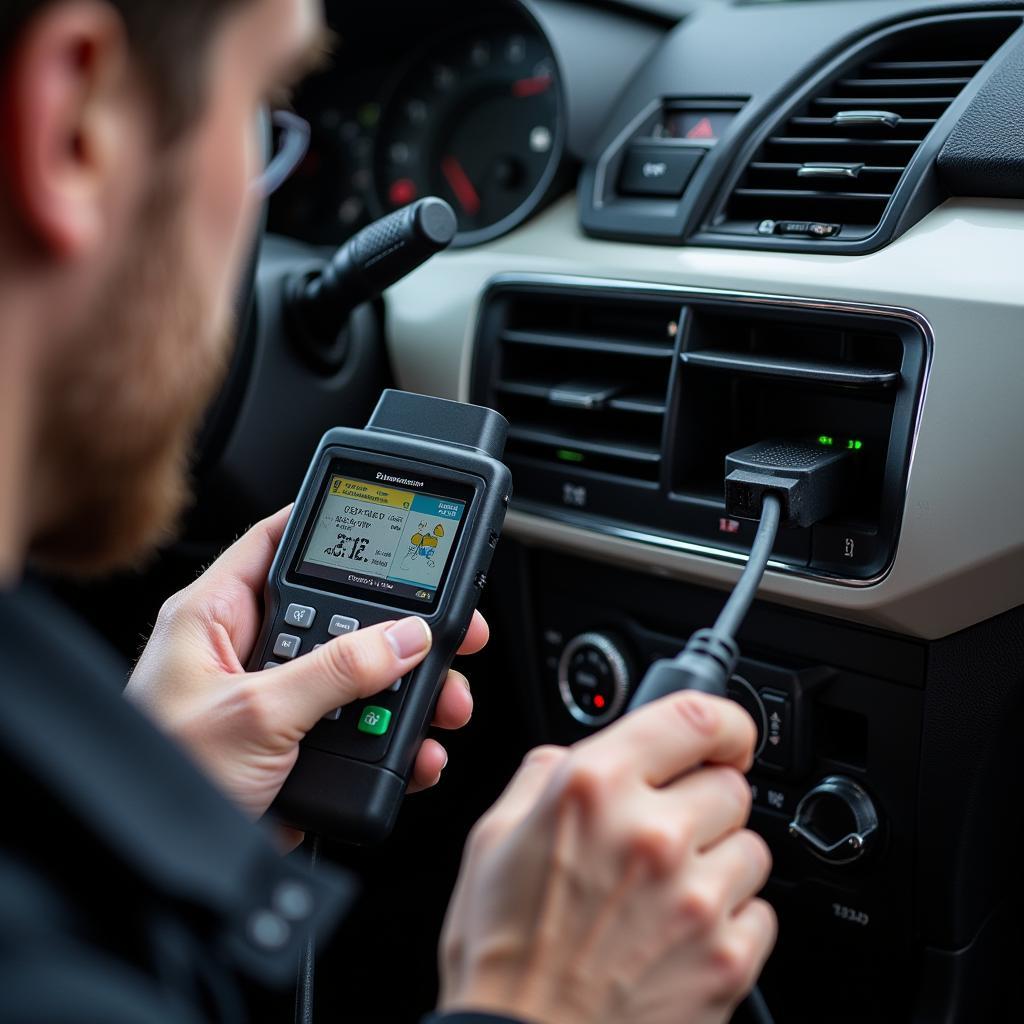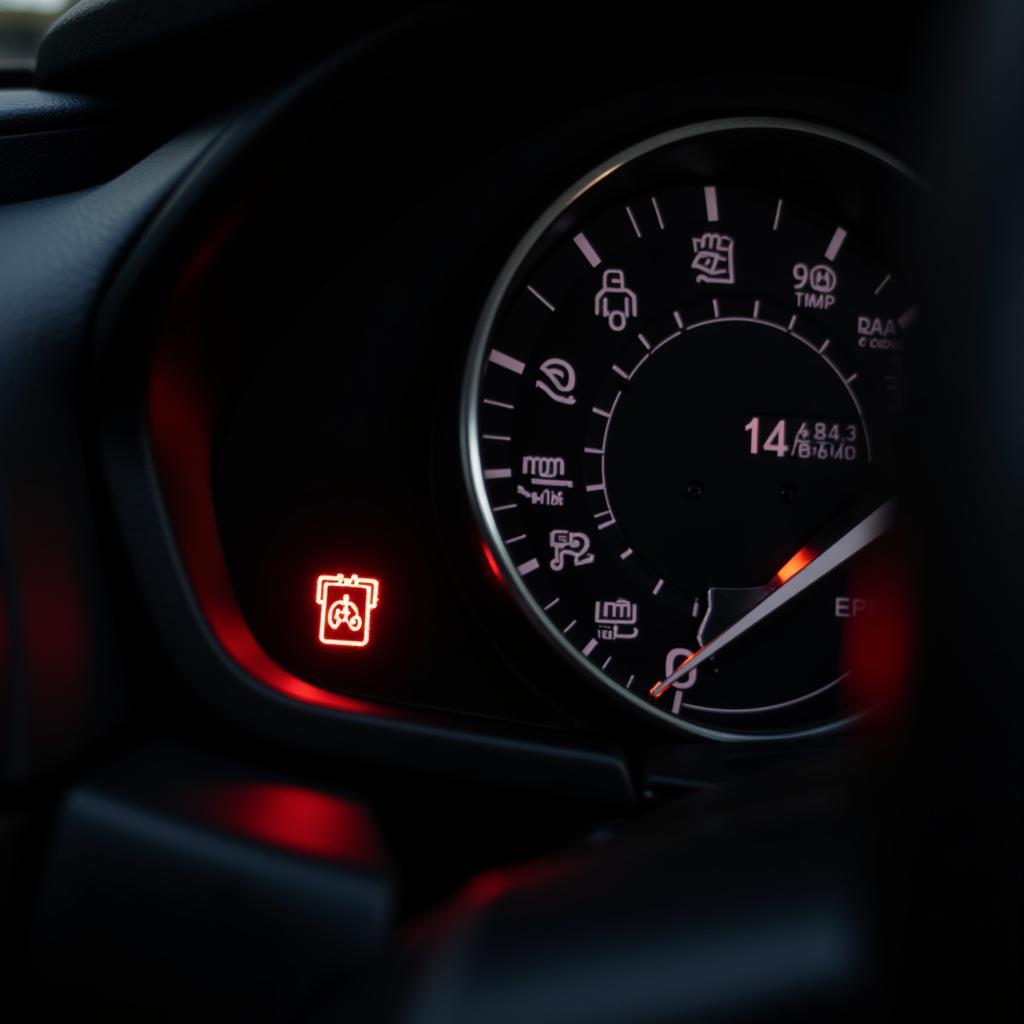The seat belt warning system relay plays a crucial role in ensuring your safety and the safety of your passengers. This often-overlooked component is responsible for connecting and disconnecting the electrical circuit that triggers those all-important warning lights and chimes, reminding everyone to buckle up. A malfunctioning seat belt warning system relay can lead to a frustrating situation, where your car constantly thinks a seat belt isn’t fastened, even when it is. This guide delves into the intricacies of this system, helping you understand its function, common issues, and potential solutions.
How the Seat Belt Warning System Relay Works
The seat belt warning system is designed with safety as its top priority. When you start your car, the seat belt warning system relay is typically in an open state. As you buckle your seat belt, the buckle mechanism engages a switch that signals the relay to close. This closed circuit allows power to flow to the warning lights and chimes, effectively turning them off. Conversely, if a seat belt is unbuckled, the circuit opens, activating the warning system to alert the driver and passengers.
Common Seat Belt Warning System Relay Problems
Like any electrical component in your vehicle, the seat belt warning system relay can encounter issues, leading to a range of symptoms. Here are some of the most common problems associated with a faulty relay:
- Constant Warning: This is perhaps the most common and frustrating symptom of a failing seat belt warning system relay. Even when all seat belts are securely fastened, the warning lights stay illuminated, and the chime may sound continuously. This persistent warning can be distracting and indicate a problem with the relay’s ability to properly close the circuit.
- Intermittent Warning: In some cases, the warning may come on and off intermittently, even when there’s no change in the seat belt’s status. This flickering or temporary activation of the warning system could signal a loose connection within the relay or a failing relay mechanism.
- No Warning: While less common, a complete absence of the seat belt warning can also indicate a relay problem. If the relay fails in an open position, it prevents the circuit from closing, even when seat belts are unbuckled. This failure means the warning system won’t activate at all, posing a safety risk as occupants might not be alerted to unfastened seat belts.
Diagnosing Seat Belt Warning System Relay Issues
Pinpointing the exact cause of a seat belt warning system malfunction requires a systematic approach:
- Check the Obvious: Begin by visually inspecting all seat belts and buckles for any signs of damage, debris, or misalignment that could interfere with the buckle switch.
- Consult Your Owner’s Manual: Your car’s manual often provides valuable information about the location of the seat belt warning system relay, fuse box, and related components.
- Inspect the Fuse: Locate the fuse associated with the seat belt warning system in your vehicle’s fuse box. A blown fuse could be the culprit behind a complete lack of warning.
- Test the Relay: With the ignition off, carefully remove the relay and inspect it for any physical damage. You can test the relay using a multimeter to check for continuity between its terminals.
“It’s always best to start with the basics,” advises veteran automotive electrician, John Miller. “A simple visual inspection and a quick check of the fuses can save you a lot of time and trouble.”
Replacing a Seat Belt Warning System Relay
If your diagnosis points to a faulty relay, replacing it is a relatively straightforward procedure:
- Disconnect the Battery: Before working on any electrical components, disconnect the negative terminal of your car battery as a safety precaution.
- Locate the Relay: Using your owner’s manual, find the seat belt warning system relay. It’s usually located in the fuse box under the dashboard or in the engine compartment.
- Remove the Old Relay: Carefully pry the old relay out of its socket. Note the relay’s orientation before removing it.
- Install the New Relay: Align the new relay with the socket and gently push it in until it clicks into place.
- Reconnect the Battery: Reconnect the negative battery terminal.
When to Seek Professional Help
While replacing a seat belt warning system relay can often be a DIY task, there are situations where professional assistance is recommended:
- Complex Electrical Issues: If the problem persists after replacing the relay, there might be a deeper electrical issue within the system, requiring advanced diagnostic tools and expertise.
- Airbag System Integration: In many modern vehicles, the seat belt warning system is closely integrated with the airbag control module. Tampering with this system without proper knowledge could have serious safety implications.
 Car Diagnostics by a Professional Mechanic
Car Diagnostics by a Professional Mechanic
Preventing Future Problems
Here are some tips to prevent future issues with your seat belt warning system relay:
- Regular Inspections: Periodically check your seat belts, buckles, and wiring for any signs of wear and tear.
- Avoid Moisture: Moisture can corrode electrical connections, leading to malfunctions. Ensure your car’s interior is dry and free of leaks.
- Gentle Handling: Treat your seat belts with care. Avoid yanking or forcefully pulling on them, as this can damage the buckle switch mechanism.
“Proactive maintenance goes a long way in preventing frustrating and potentially dangerous car problems,” adds Miller. “Regular checks can catch minor issues before they escalate.”
Conclusion
The seat belt warning system relay might be a small component, but its role in your vehicle’s safety system is significant. Understanding how it works, recognizing the signs of a faulty relay, and knowing how to address the issue can help you ensure a safer and less frustrating driving experience. Don’t hesitate to consult a qualified mechanic if you suspect a problem with your seat belt warning system relay or any other safety-critical component in your car.
FAQs
Q: Why is my seat belt warning light on even when I’m buckled?
A: This could be due to a faulty seat belt buckle switch, a problem with the seat belt warning system relay, or a wiring issue.
Q: Can I drive with a faulty seat belt warning system relay?
A: While it might be tempting, driving with a malfunctioning safety system is never advisable. A faulty relay could indicate a larger problem that could compromise your safety.
Q: How much does it cost to replace a seat belt warning system relay?
A: The cost can vary depending on the make and model of your vehicle. Generally, you can expect to pay between $20 to $50 for the relay itself. Labor costs can add another $50 to $100 to the total.
Q: How often should I replace my seat belt warning system relay?
A: Relays are designed to be fairly durable, and there’s no set replacement interval. It’s best to replace it if you’re experiencing problems or if it’s showing signs of wear and tear.
Q: Can I bypass the seat belt warning system?
A: While it might be technically possible to disable the warning system, it’s highly discouraged. Seat belts are crucial safety devices, and bypassing the warning system puts you and your passengers at risk.

